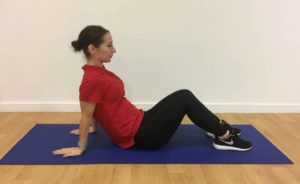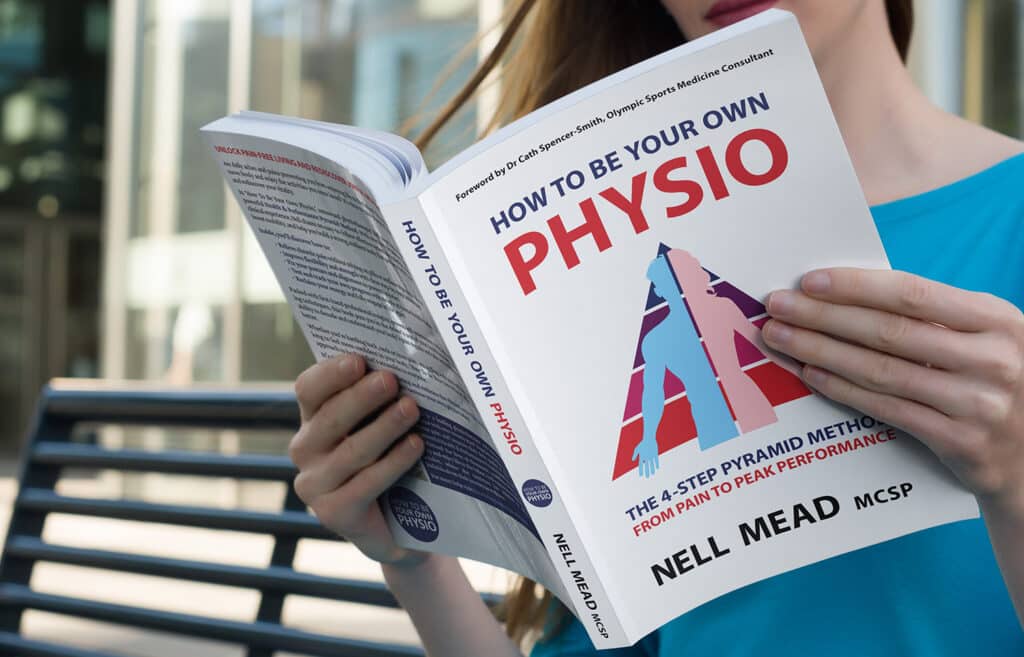Over the past few weeks, I’ve been writing about the phenomenon of gluteal imbalance, which I’ve dubbed the Lazy Bum Epidemic. In How Skeletal Muscles Work, I wrote about the three different types of skeletal muscle: prime movers, local stabilisers and global stabilisers – how they function when everything’s fine, and what happens when things go wrong. In The Lazy Bum Epidemic, I explained how this applies to the glutes, and how muscle imbalance in this area can affect you and result in injury; and in What is the RSM Model? I went through the Release-Stabilise-Move process that I use to retrain muscle imbalance. Last week we started to apply that to the glutes – starting with Release; today it’s time to start thinking about how to Stabilise.
Why is this important?
Having got the tight prime mover muscles to relax, which allows the body to align properly, it’s now time to retrain the deep stabilisers (also known as postural muscles) whose job is to hold the body in an aligned position.
The first step is to build the neural pathways between the brain and the muscle so that the muscle can contract at all; and the next step is to use the muscle in a functional way.
Feedforward mechanism
As we discussed in How Skeletal Muscles Work, an important thing about the stabilisers is that they are activated by your brain on a feedforward loop. This means that, before you go to move, your brain automatically switches them on, thus stabilising your joints and making sure that when you move, your joints are prepared and thus don’t jerk unexpectedly and get injured.
However, this is only true of the mobile, pain-free, optimally-functioning joint – or in this case, hip and pelvis.
When you have a really stiff pelvic area, or when you have pain, your stabilisers become inhibited and switch off.
If you have pain, this happens because stabilisers switch off in the presence of pain. After a while, this switched-off state becomes a habit, ingrained in the muscle memory, and the feedforward loop is forgotten. This puts you at risk of further injury caused by unexpected jerking of joints that haven’t been pre-stabilised.
If you are really stiff, this simply happens because your joints and ligaments are doing all the stabilising, so the stabilisers don’t have any work to do. As a result they switch off; and after a while, this switched-off state becomes a habit, ingrained in the muscle memory, and the feedforward loop is forgotten. This puts you at risk of back injury caused by unexpected jerking of spinal joints that haven’t been pre-stabilised.
Either way – having released the prime movers, our goal is to retrain the feedforward loop. So during these exercises, you have to make sure that the first muscle to contract is the stabiliser.
Endurance versus power
Prime movers whose job is to produce movement (such as your biceps) need to be big and strong and able to pump lots of iron. They don’t need an awful lot of endurance – you switch them on when you need them, and when you don’t, they relax. So when you train your biceps, you pump the weights up and down – you don’t spend hours holding them still.
Stabilisers are different – they need to be able to switch on and hold at a low level throughout the day, to control the alignment of your joints. So you need to train them for endurance and control, not for power.
Gluteus medius
I’ve heard it said that if the anatomists were naming the muscles now, rather than 200 years ago, then gluteus medius would have been divided into two muscles rather than being referred to as one.
That’s because there are two parts to gluteus medius, and they have two rather different functions.
The front part of the muscle, at the upper outside of the hip, has fibres that run almost vertically between the iliac crest at the top, and the greater trochanter of the femur at the bottom (the knobble at the outer edge of the thigh bone). This part acts more like a power muscle in that it goes into spasm when there is dysfunction, jamming the ball of the hip into the socket. This area is a good place to release with the cork tennis ball.
However, the back part of the muscle has more horizontally-oriented fibres, which attach the greater trochanter to the lower part of the iliac crest at the back. In traditional anatomy books, it is described as an external rotator of the hip – but in practice, we now believe this part of gluteus medius acts more as a stabiliser of the hip, preventing the femur from sliding forwards and rolling inwards as you load the leg. So – when we retrain the gluteus medius, this is what we are aiming to control.
How do you do that?
While ultimately we want to retrain the fibres at the back of gluteus medius, many people simply don’t have any ability to activate their glutes at first, let alone being able to be as specific as activating the posterior gluteus medius on its own.
To get around this problem, I generally start by training the glutes to switch on in more global way without worrying about finesse; at first we just want to build the neural pathways from the brain to the glutes.
However, while most people find it easier to contract both buttocks at the same time, it’s important to be able to switch them on one at a time – because when we walk or run, the glutes’ job is to stabilise the landing hip.
If you can’t alternate, then when you walk, your glutes will be either always on, or always off. Always on is exhausting (and leads to muscle spasm!) and always off means your body having to find other muscles to compensate for the glutes not doing their job.
Alternating glutes
For most people, the easiest position for switching on your glutes is when you’re sitting down. This is the position when your glutes have most feedback from the nerve endings, because the nerve endings directly over the glutes are being touched.
You can either sit on the floor as Hayley is doing above; or you can sit on a chair… the important thing is that you’re sitting down and relaxed.
Start by trying to squeeze your buttocks together. You should feel your body raise up slightly as you do this. Get a rhythm going – on/off, on/off – so that you are quite sure when the muscles are contracted, and when they are relaxed.
Once this is easy, try contracting just your right buttock, keeping the left one relaxed; and then swap: contract your left buttock while keeping your right one relaxed.
Again, go for a rhythm – left, right, left, right.
Once that’s too easy – check out my YouTube channel or try my online hip rehab course for more.
Great – what next?
Next? Well, now that you’ve released your prime movers and started activating those inhibited stabilisers, it’s time to put them into action with some movement! And that’ll be the next post.
Want to know more? Next week, I’ll be giving you some tips on how to Move to treat your lazy glutes – but if you can’t wait, call my team on 0207 175 0150 or click the button below to book an appointment. Alternatively, you can go straight to my new website, How to be your own physio, where you can either take the self-assessment course to work out why your glutes might not be working as well as they might, or you can go straight to my hip rehab course which teaches you how to release, stabilise and move your glutes.








